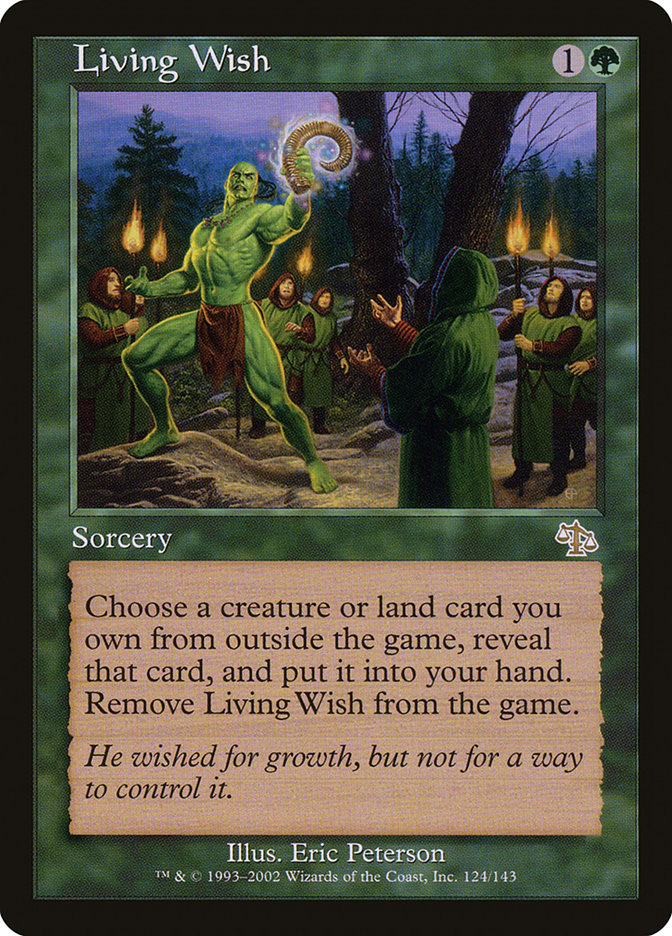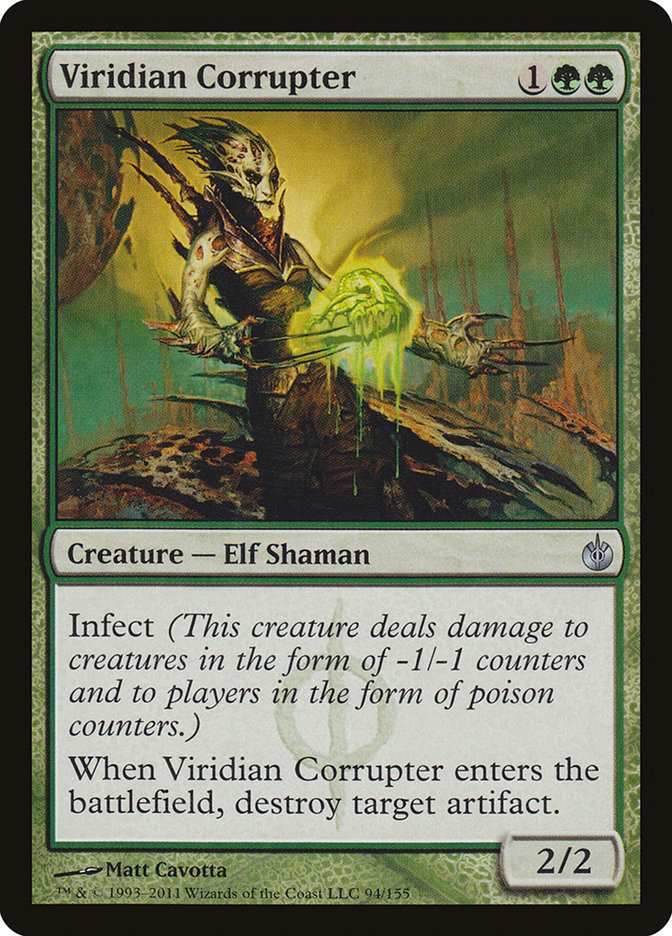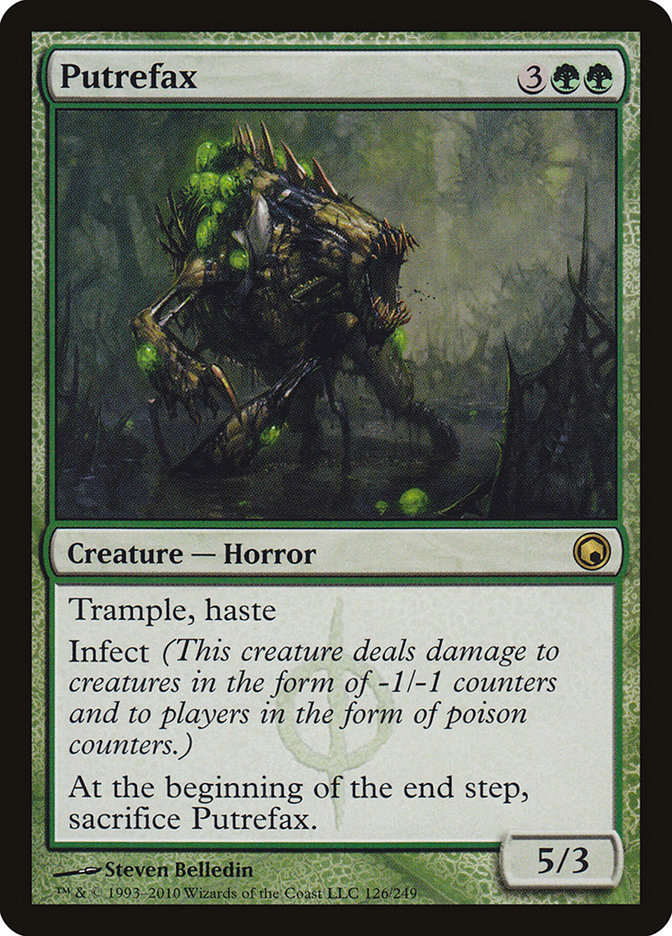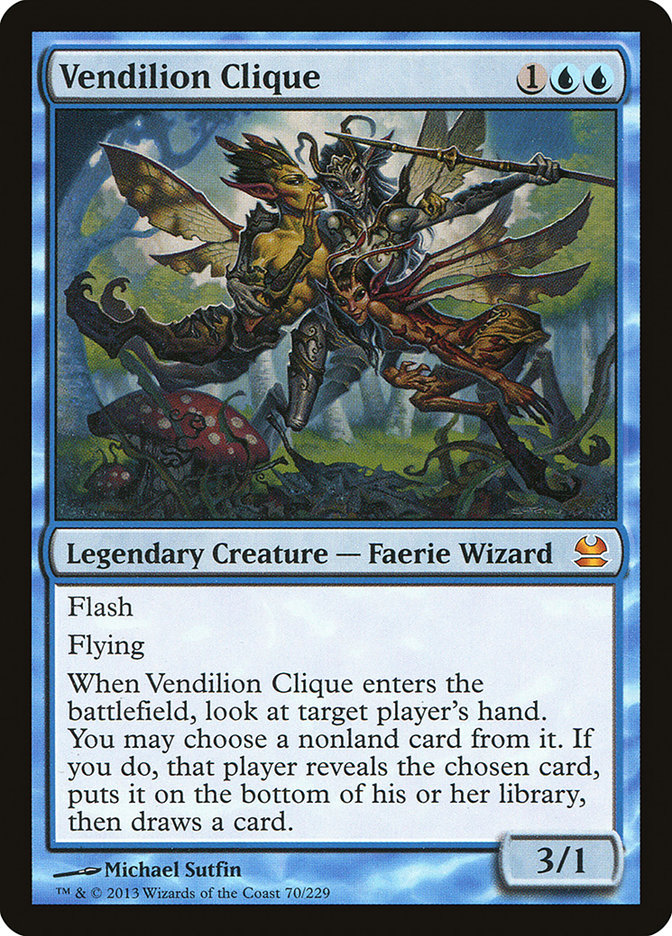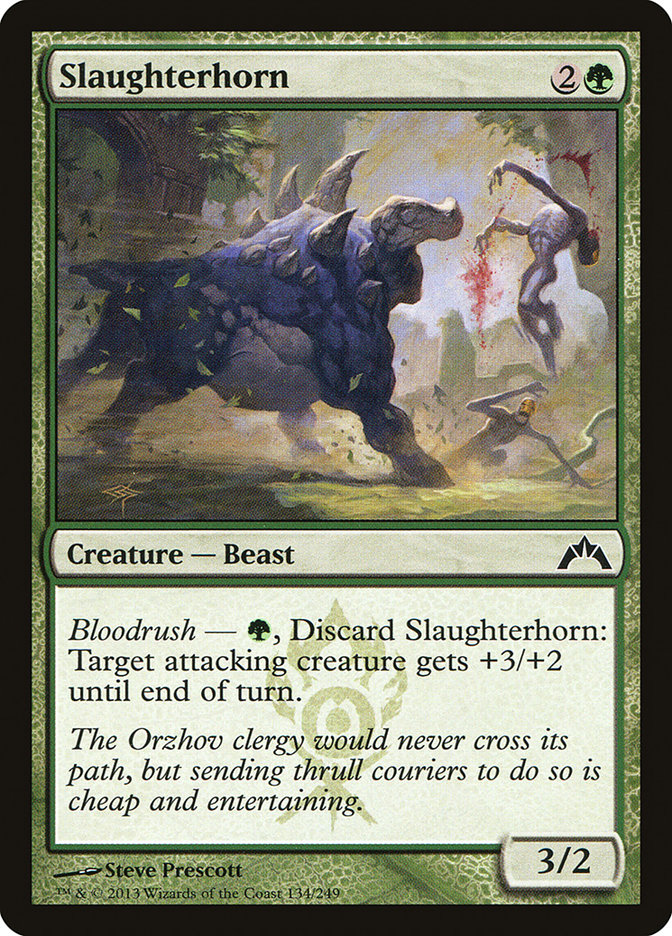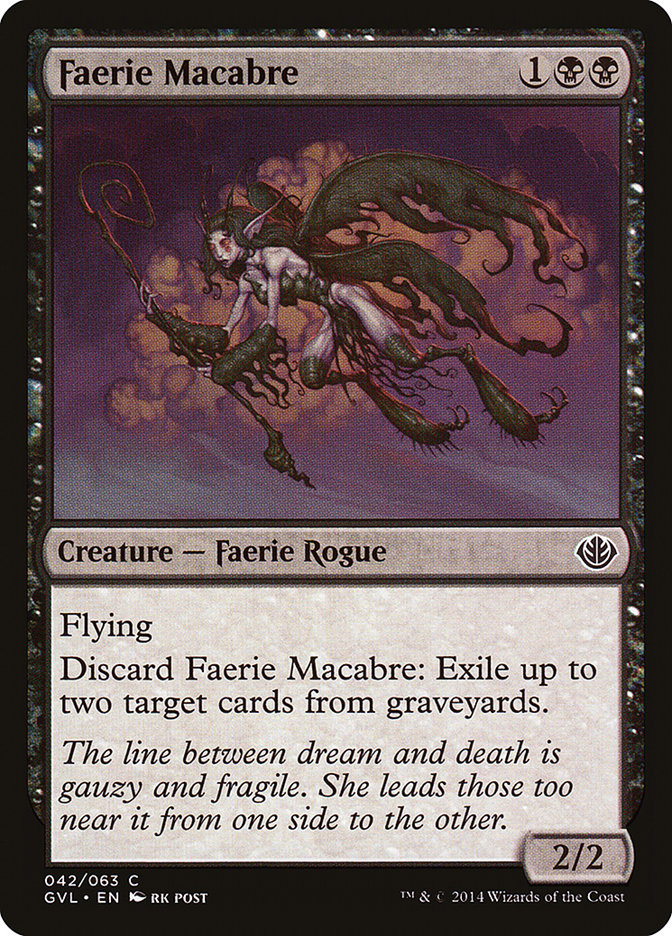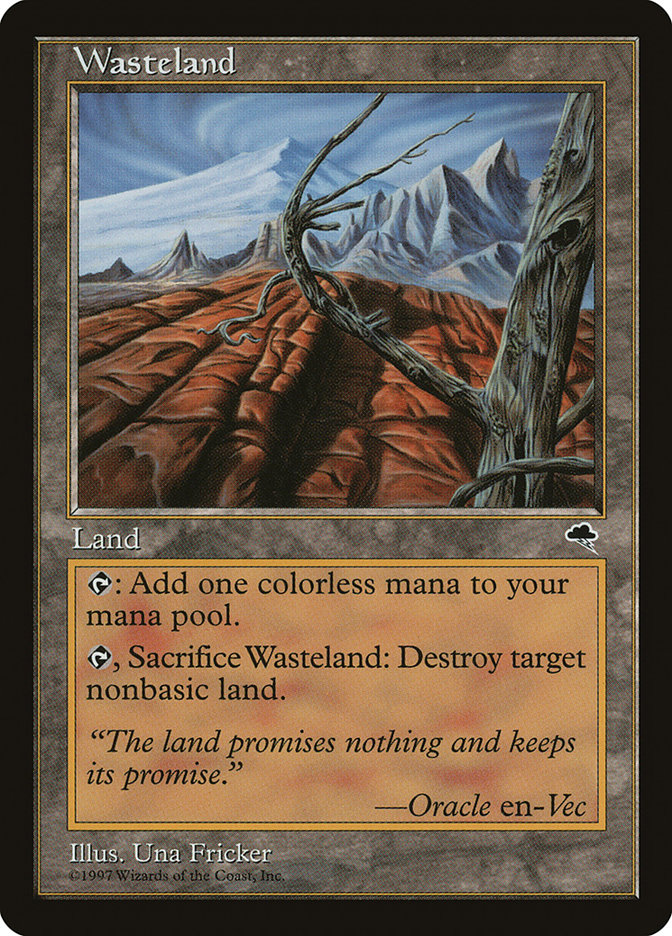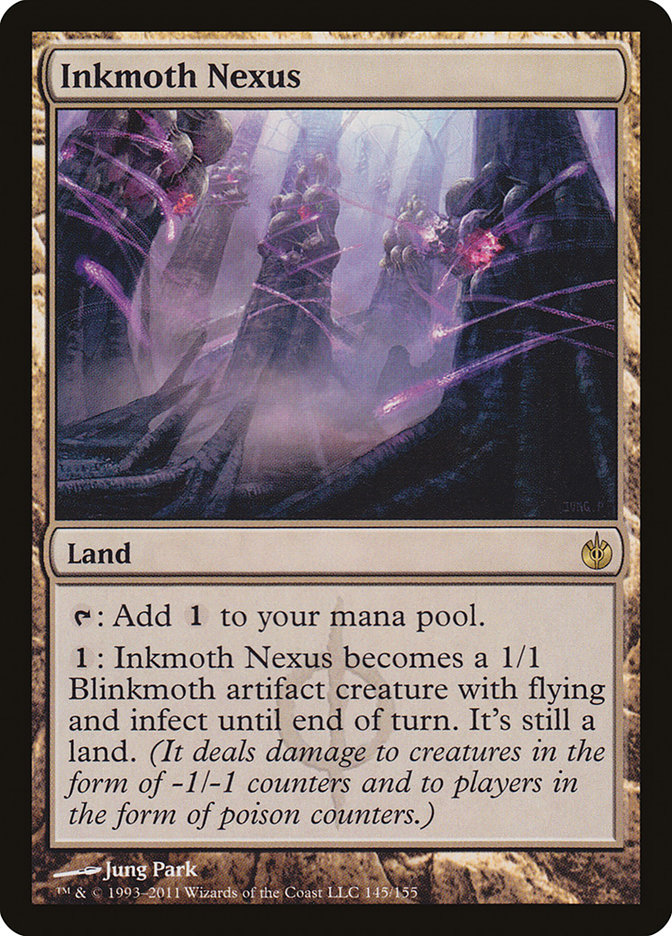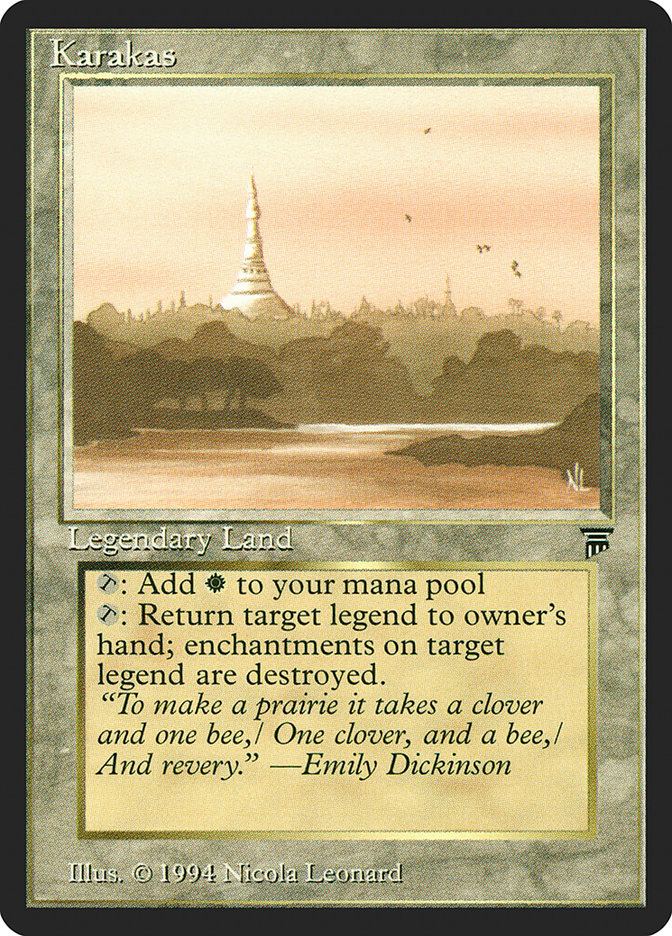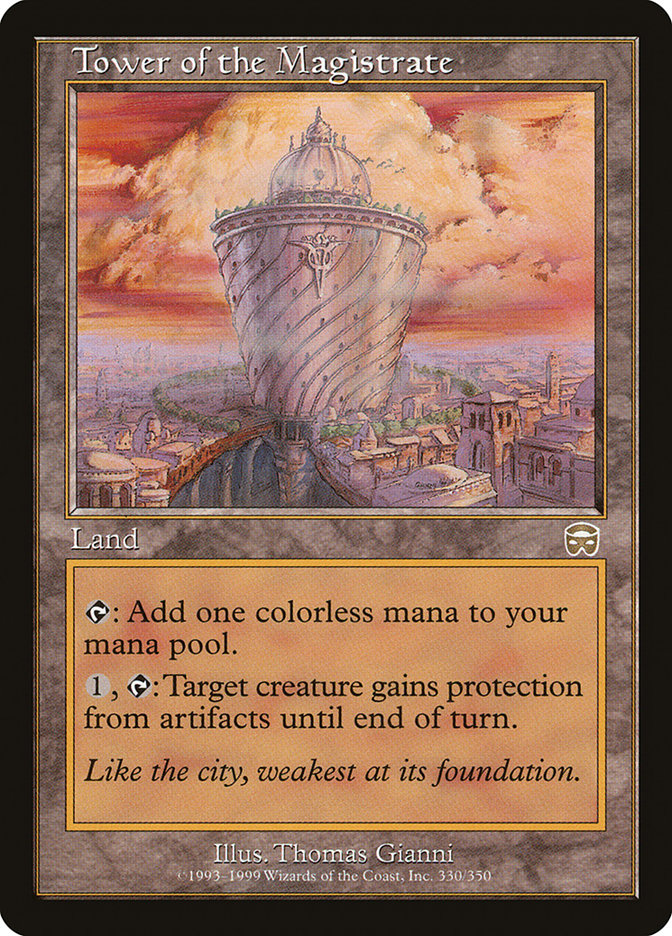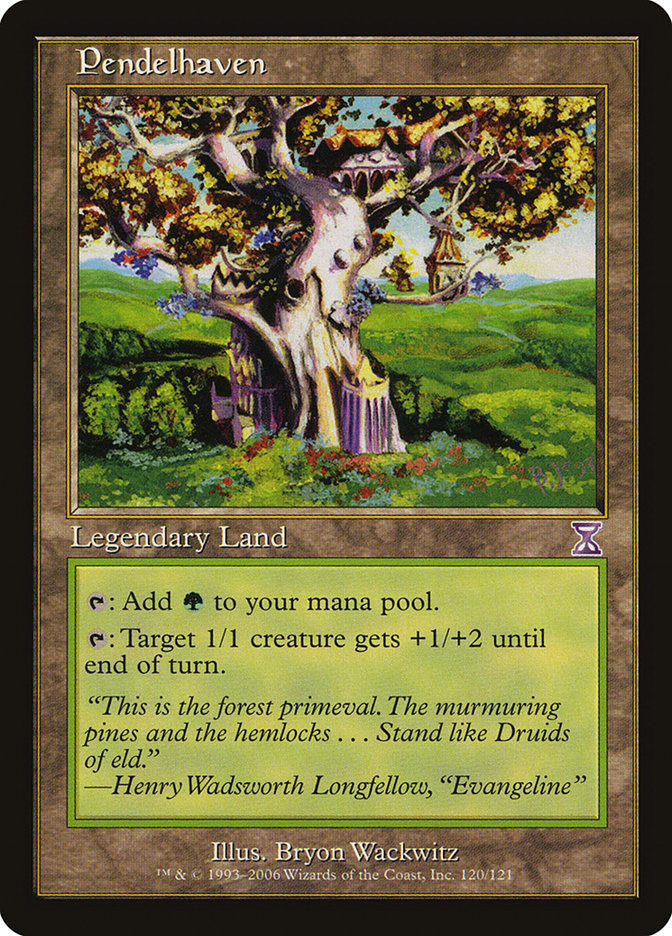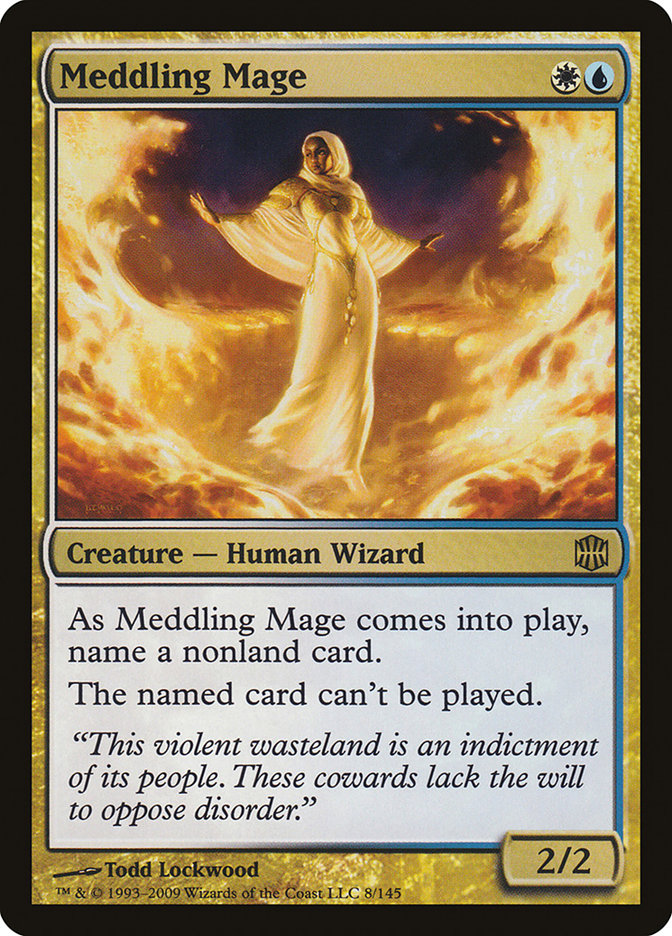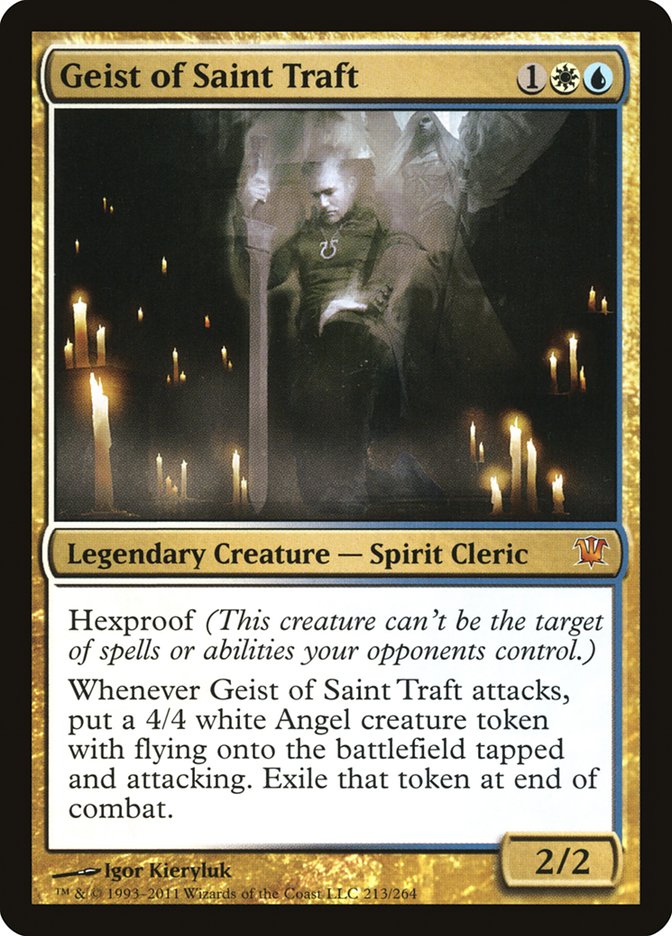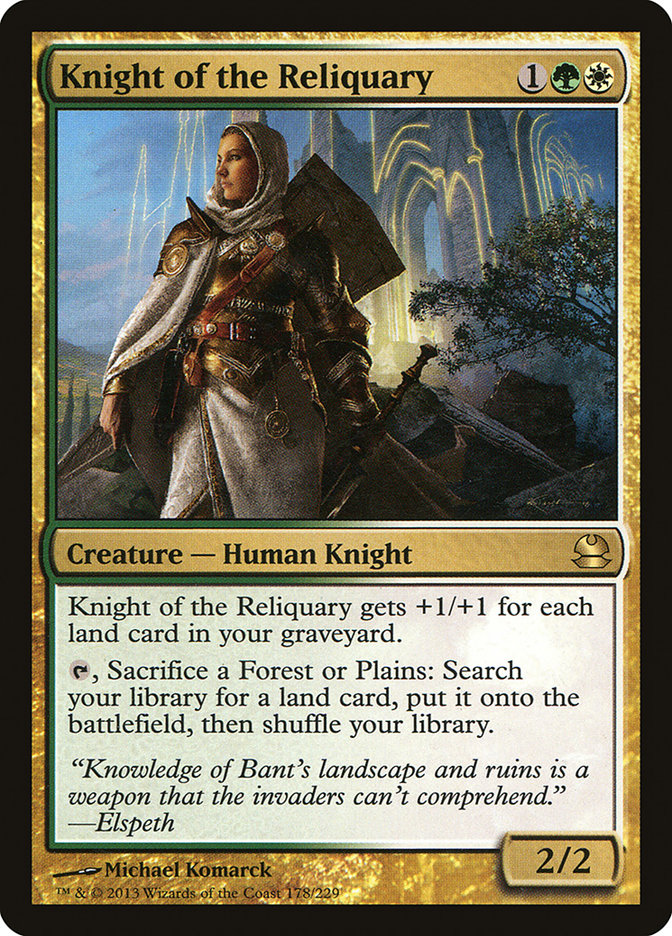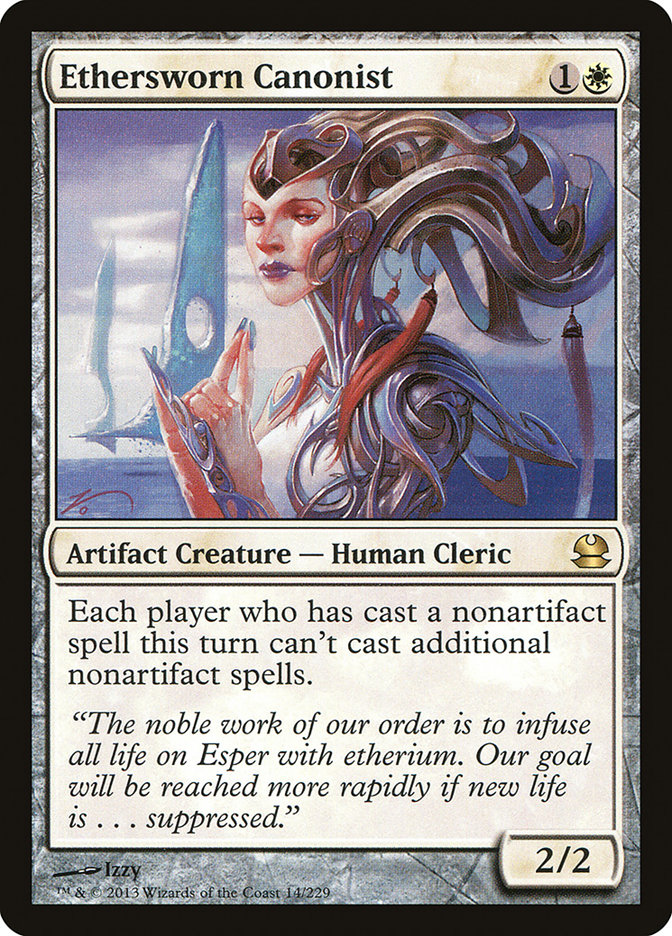This past weekend at the Season One Invitational, I played Infect to a 6-2 in the main event and finished second in the Sunday Legacy Premier IQ. While I
dabbled in white (which I’ll get to later), others chose the traditional take. Either way, the deck is still very good.
Creatures (12)
Lands (20)
Spells (28)

More people than ever played Infect in Legacy this time around at the Invitational. Brad Nelson and Todd Anderson already had previous experience with the
archetype and felt like Infect was a good choice. Brad soon convinced Chris VanMeter and Seth Manfield as well. It seemed like people were coming around to
the idea that Infect isn’t just smoke, mirrors, and gimmicks. Heck, going into my camera match against Brian Braun-Duin at 4-0 I was half expecting him to
be packing poison creatures too!
I saw a Facebook post by Dylan Donegan saying he was “channeling his inner Tom Ross,” which I took to mean he was on the hunt for back-to-back Invitational
wins. Come to find out it really meant he was playing the same archetypes as me in both formats: Jeskai Tokens and Infect. The kid has style.
Dylan did some independent testing that led him to cutting Crop Rotation, Stifle, and Ponder for four copies of Preordain. He had good arguments for
Preordain being better than Ponder in a lot of situations, mainly when you want to keep two specific cards without having to draw a third less useful one.
I saw a handful of people on-board with his build during the Invitational and Premier IQ.
Creatures (12)
Lands (17)
Spells (31)

With Treasure Cruise gone, Infect has room to flourish again. It wasn’t exactly the Ancestral Recall reprint itself that punished Infect: It was the cards
surrounding it that enabled it out of a U/R Delver shell. Everyone had Gitaxian Probes with essentially no drawback and would fill out their cheap removal
suite with Forked Bolt. These cards were obnoxious to play against when your plan is for them to be playing around deadly unknown combinations in your hand
and your win conditions are all 1/1 creatures. While I tried to compete with the menace somewhat during its era by adding my own copies of Treasure Cruise,
Infect just couldn’t keep up with how well they utilized their graveyard and the sheer number of cheap cantrips they cast.
Infect plays a lot of mana sources when compared to other cheap creature disruptive combo decks like the many Delver of Secrets decks. Twenty lands and
four Noble Hierarchs along with cantrips and cheap spells lets you play around other decks that try to constrain you on mana with Wasteland, Rishadan Port,
Daze, Stifle, and Spell Pierce pretty well. Infect has to have enough mana since Inkmoth Nexus is a colorless land that needs to be activated while still
having enough mana left over to pump or protect.
All in all, Infect served me well. I’ve always had a reasonable record with the deck in Invitationals and could count on enough match wins from it for a
Top 8 chance. The other half of that equation was Standard, which I leaned on Brad Nelson’s expertise. He recommended Jeskai Tokens, an archetype I was
fond of and had been playtesting a healthy amount myself. There was a good chance I’d be running Jeskai Tokens anyway but there being a consensus that it
was the preferred deck among the Roanoke crowd only solidified the confidence in my choice.
Creatures (8)
Lands (19)
Spells (33)

I was personally liking a split between Goblin Rabblemaster and Monastery Mentor, and the question in my mind was whether it was 2/2 or 3/1 and in which
direction. Goblin Rabblemaster is the more powerful card when you’re ahead and capable of winning the game on its own, while Monastery Mentor filled some
roles that Rabblemaster couldn’t, like playing better defensively and attacking better against a range of blockers.
There was a lot of initial hype about Monastery Mentor and about the next coming of Impulse in Anticipate. I feel that both cards underperformed when
jammed as four-ofs into decks and that both are good in moderation as role players. Both are quite inefficient when drawn in multiples, and I liked the
small numbers of them in Jeskai Tokens. The same goes with Soulfire Grand Master: an inherently good card that doesn’t stack, and thus you really need to
be comfortable not counting on drawing it and being happy when you do.
Wild Slash was great. You need to be doing something with one mana, and having a removal spell on the draw is great, but more importantly, you have
something to do when you have to play lands that enter the battlefield tapped on the first two turns of the game. For Standard, I can’t see a deck that
eschews any of the following three as a four-of in their deck:
Hyper-aggressive decks are doing their own things with Foundry Street Denizen and Favored Hoplite, but as far as broad Standard deck construction advice
goes, those are the three to stick to.
Infect With White
I wrote about Bant Infect
after winning the 2014 Season Three Invitational with it. Even with the passing of time, it’s remained commonplace to play the strictly G/U version, as you
have answers to creatures in Submerge and Piracy Charm and a touch of graveyard hate in Crop Rotation for Bojuka Bog, so white isn’t really a necessity.
However, I felt there was enough buzz for some of Infect’s most problematic matchups like Grixis Delver, Sultai Delver, Shardless Sultai, and Lands that I
wanted more impactful cards this time around.
Creatures (12)
Lands (19)
Spells (29)
- 4 Brainstorm
- 1 Forest
- 3 Force of Will
- 3 Daze
- 2 Berserk
- 1 Stifle
- 4 Invigorate
- 1 Crop Rotation
- 1 Ponder
- 2 Spell Pierce
- 3 Vines of Vastwood
- 2 Gitaxian Probe
- 1 Become Immense
- 1 Dig Through Time
Sideboard

Rest in Peace was great for me when cast. I even ran up against the perfect scenario against Dredge in round 7 of the Invitational when my opponent led off
with Cabal Therapy naming Crop Rotation (fearing the instant-speed Bojuka Bog) when I had the Rest in Peace in hand instead. Unfortunately I was already on
five cards and didn’t hit a second land that game, but the plan mostly worked out as I drew it up.
Swords to Plowshares was great for me all weekend since I played a bunch of non-green creature decks throughout both tournaments. Death and Taxes showed up
in high numbers, and it felt great to remove anything from Mother or Runes to Phyrexian Revoker to Mirran Crusader. I had enough sideboard cards to take
out all of my counterspells, go up on removal and lands, and play well against their attempts to constrain my resources.
Wish Infect
During the card ride home, we started brewing various Living Wish decks. It began with Dark Depths and Thespian’s Stage and eventually led to the idea of
Living Wish being added to Infect as a utility card. After all, the deck is a combo deck that would sometimes run upwards of four lands in its sideboard
anyway. What started as random unplayable ideas started sounding more and more competitive and realistic. Here are a few of the standout options we came
across:
Creatures
Serves as a way to remove problem artifacts, mainly Umezawa’s Jitte and Chalice of the Void.
A heavy hitter that can threaten to be a haste one-shot alongside either Berserk or Invigorate + Noble Hierarch.
An interactive non-poison threat. I’ve always wanted a non-Infect creature that wasn’t an 0/1 that I could use to punish people who frivolously use their
life total. Vendilion Clique serves as the best was to disrupt their hand and to punish people who go too low on their life total.
A pump spell that you can tutor for. Has a nice benefit of being uncounterable, and thus gets under a Counterbalance.
An answer to Emrakul, the Aeons Torn or Elesh Norn, Grand Cenobite after they hit play. This has a wide range of other targets as well, such as Blighted
Agent in the mirror or a Marit Lage token.
Uncastable, of course, but serves as your way to disrupt graveyard-based strategies. Not great against things like Tarmogoyf or Deathrite Shaman, but it’s
nice against Reanimator.
Lands
The maindeck has always been a bit high on colorless lands, so moving them to the sideboard enables you to play either more colored lands, less lands, or
even both. Will sometimes function to mana screw your opponent, but more often it will be there to destroy an extremely problematic land like Grove of the
Burnwillows, Maze of Ith, or Glacial Chasm.
Often your best threat since it’s so hard for some decks to interact with. It does come at a cost of cutting one from the maindeck, but that tradeoff comes
with its own perks as well.
The go-to land for bouncing big reanimated and Show and Tell monsters. Also relieves the pressure from Thalia, Guardian of Thraben. Uncertain if it’s
necessary when you have access to Gilded Drake though.
Another previous Crop Rotation target. Best at equipping the Germ token from Batterskull to effectively kill it and to unequip Umezawa’s Jitte. Possibly
redundant as a target with Viridian Corrupter.
A nice value land when you’re trying to win outside of a pump spell combo. Protects against small removal like Disfigure and helps in combat against some
decks like Death and Taxes. If I’m not playing one in the maindeck and the other in the sideboard, I’m playing two maindeck.
Not quite as powerful when it doesn’t come at instant-speed with Crop Rotation, Bojuka Bog can still be a fine turn 3 play against Dredge if you can use
soft counters to make it that far. Also playable on turn 2 if you have Noble Hierarch.
White Cards
To play these, you’d want to play a Savannah maindeck since I don’t consider the white from just Noble Hierarch enough to reliably warrant their sideboard
inclusion.
Preemptively stops a problem spell. Could prevent Tendrils of Agony from beating you game 1 out of Storm.
The best pound-for-pound regular damage creature you could want from the colors. Curves well after Living Wish so Geist remains as a very good reason to
want both the Wish package and to play white. Geist of Saint Traft has floated around as a sideboard idea that would completely alter the way sideboarded
games were played. However, there were neither enough cards to bring in or bring out to reliably play that game, and it left the deck doing neither plan
well (leaving opponents at ten life and five infect isn’t where you wanted to be). However, as a timely bullet you’re sure to be on the right side of the
fence at the right time.
A potentially huge creature when you’re running so many fetchlands. Better in decks that can threaten a continuous stream of Wastelands. With that said,
the threat of your three Inkmoth Nexus and the fear of other instant-speed lands could be worth its inclusion.
Solely for the Storm matchup. You do often want to cast multiple spells in the same turn yourself, but the theory here is that they’ll be hurt far more
than you with it being on board.
Another hate card against Sneak and Show and Reanimator. Loses a lot of its flair without the surprise value through.
These are only the top contenders, and I’m sure that you as readers have more ideas for sweet silver bullets. Here’s the first run of it incorporating the
concept without having too much overlap on card effects.
Creatures (12)
Lands (18)
Spells (30)

Rough around the edges, for sure, but in a format as deep as Legacy it’s tough to get everything right on the first pass. It’s gonna take a few Legacy
Opens and Premier IQs to get right, but this seems like a challenge worth seeing through.




